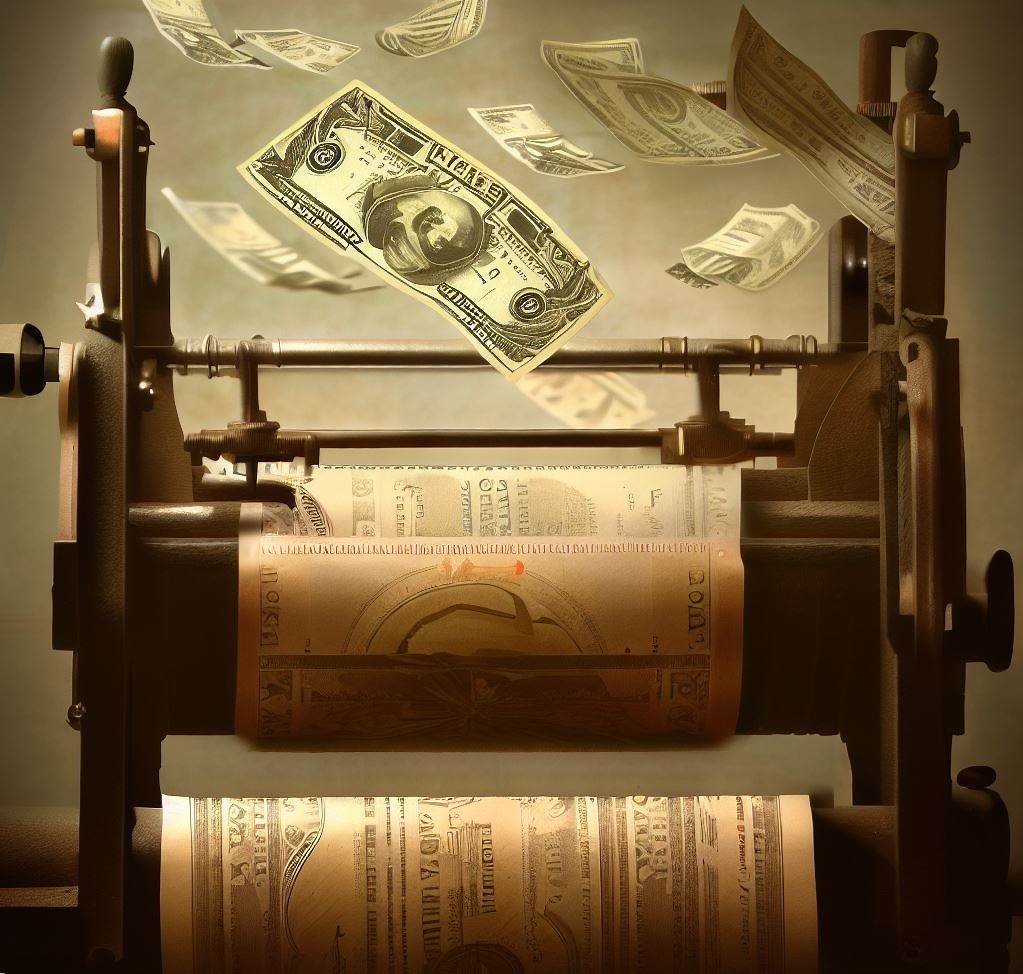Introduction
Step right up, ladies and gentlemen, to witness the captivating magic show of the U.S. economy! And at the heart of this mesmerizing spectacle stands the enigmatic Federal Reserve, like the grand magician wielding its economic wand.
Now, you might be wondering, “Why does this Federal Reserve matter so much?” Ah, my dear audience, hold onto your hats, for we are about to unravel the secrets of its captivating importance!
In the realm of economic magic, where money flows and financial currents swirl, one institution holds a special wand of influence – the Federal Reserve. Much like a wizard overseeing a mystical kingdom, the Federal Reserve plays a crucial role in shaping the economy of the United States. With its powers of interest rates, money supply, and financial stability, the Federal Reserve weaves a spellbinding tapestry that impacts the lives of individuals, businesses, and the nation as a whole. Let’s embark on a journey to unveil the enchanting importance of the Federal Reserve and its magical touch on the economy.

Setting the Stage with Interest Rates
Imagine the economy as a grand stage, and interest rates as the spotlight that shines on the actors – consumers and businesses. With its financial wand, the Federal Reserve can raise or lower interest rates, setting the stage for economic performances.
When interest rates go down, it’s like turning up the spotlight on the stage. Consumers and businesses are encouraged to borrow and spend, boosting economic growth and job opportunities. But when interest rates rise, it’s like dimming the lights – borrowing and spending slow down to keep inflation in check.

The Money-Printing Extravaganza
In the magical realm of finance, the Federal Reserve holds the power of money creation! Like a skilled alchemist, it can conjure up new money or withdraw it from circulation. This money magic impacts the economy in wondrous ways.
When the prints more money, it’s like sprinkling fairy dust on the economy. With more money flowing, businesses can grow, jobs multiply, and consumers feel wealthier. But beware, too much fairy dust can lead to the curse of inflation, where prices soar like magic broomsticks!

Keeping the Financial Castle Safe
The U.S. economy is like a grand castle, and its banking system the mighty fortress. The Federal Reserve, as the guardian of this fortress, ensures its stability and safety. It oversees banks, making sure they play fair and follow the rules, so our money stays protected like treasure in a vault.
When financial storms threaten the castle, like the 2008 financial crisis, the Federal Reserve steps in with its superhero cape. It provides emergency help to banks and prevents them from crumbling like a house of cards. Truly, it’s the knight in shining armor of the financial realm!
Taming the Inflation Dragon
Inflation is like a fiery dragon, breathing hot flames that burn away the value of money. with its brave heart, fights this dragon to keep inflation under control. By raising interest rates or using other monetary tools, it keeps the dragon in check and ensures our money retains its purchasing power.

The Unseen Threads of Monetary Policy
Behind the scenes of the economic magic show lies the art of monetary policy. The Federal Reserve weaves these unseen threads to achieve its goals – stable prices, maximum employment, and balanced economic growth. Like a puppeteer pulling the strings, it manipulates interest rates and money supply to guide the economy’s dance.
Picture a grand orchestration of economic decisions, a symphony where the delicate strings of interest rates, the powerful brass of money supply, and the rhythmic percussion of financial stability all come together in harmonious coordination. This is the realm of monetary policy, an intricate dance of unseen threads that sway the economy’s movements. Just as a skilled puppeteer guides marionettes on stage, central banks pull the strings of monetary policy to direct the course of economies. In this exploration, we’ll unravel the mystique of these unseen threads and discover how they shape the financial landscape, affecting everything from borrowing costs to job opportunities and beyond.

The Birth of the Federal Reserve
A. Historical context of its establishment The establishment of the Federal Reserve in 1913 came in response to a series of banking panics and financial tumult that had plagued the nation for decades. The need for a centralized monetary authority became evident as these crises exposed the fragility of the banking system and the lack of a coherent regulatory framework..
Objectives and mandates
- Price stability Maintaining price stability is one of the primary goals of the Federal Reserve. By keeping inflation in check,
- the Fed aims to ensure that the purchasing power of the currency remains relatively stable over time.
- Maximum employment strives to promote maximum sustainable employment, seeking to strike a balance between creating job opportunities and avoiding excessive unemployment.
- Moderate long-term interest rates Another objective of the Federal Reserve is to foster moderate long-term interest rates. This involves managing borrowing costs to facilitate economic growth while guarding against excessive speculation and financial imbalances.
Monetary Policy Tools at the Fed’s Disposal
A. Open Market Operations Open market operations involve the buying or selling of government securities, such as Treasury bonds, by the Federal Reserve. This mechanism allows the central bank to affect the money supply and influence interest rates.
B. Reserve Requirements The Federal Reserve sets reserve requirements, which specify the minimum amount of funds that banks must hold in reserve, thereby regulating the amount of money that can be created through lending.
C. Discount Rate The discount rate is the interest rate at which banks can borrow directly from the Federal Reserve. By adjusting this rate, the Fed can control the cost of borrowing for banks and influence credit availability
Factors considered in influential decisions
1. Economic indicators The Federal Reserve closely monitors a range of economic indicators, such as GDP growth, inflation rates, and consumer spending, to assess the overall health of the economy and guide its policy decisions.
2. Inflationary pressures Inflation is a key concern for the Federal Reserve, and decisions regarding monetary policy take into account the potential impact of inflationary pressures on the economy.
3. Unemployment rates The level of unemployment is crucial in determining the Fed’s stance on monetary policy. A high unemployment rate might necessitate expansionary measures to stimulate economic activity and job creation.
4. Global economic conditions Given the interconnectedness of the global economy, the Federal Reserve considers international developments when formulating its policy decisions. Factors such as trade tensions or economic crises abroad can influence the Fed’s approach to safeguarding domestic stability.
Expanding or Constricting the Money Supply
A. Contractionary Monetary Policy
- Raising interest rates When faced with concerns of inflation or an overheating economy, the Federal Reserve may opt for a contractionary monetary policy. This typically involves raising interest rates to discourage borrowing and reduce the money supply.
- Reducing money supply In conjunction with interest rate adjustments, the Federal Reserve can also employ various monetary tools, such as open market operations or reserve requirement hikes, to reduce the overall supply of money in the economy.
B. Expansionary Monetary Policy
- Lowering interest rates To stimulate economic growth and combat the risk of deflationary pressures, the Federal Reserve may choose to implement an expansionary monetary policy. This often involves lowering interest rates to encourage borrowing and increase the money supply.
- Increasing money supply The Federal Reserve can utilize open market operations or adjust reserve requirements to inject more money into the economy, thereby boosting aggregate demand and supporting economic expansion
C. The Federal Reserve as the Guardian of Stability
A. Lender of last resort during financial crises One of the essential functions of the Federal Reserve is to act as the lender of last resort during times of financial distress. By providing liquidity and reassuring markets, the central bank helps mitigate the impact of severe economic disruptions.
Crisis management and interventions
- The 2008 financial crisis During the 2008 financial crisis, the Federal Reserve implemented unprecedented measures to stabilize the financial system. This included injecting massive amounts of liquidity, bailing out distressed institutions, and coordinating international efforts to prevent a complete collapse.
- COVID-19 pandemic response Amidst the COVID-19 pandemic, the Federal Reserve swiftly intervened to support the economy. It implemented emergency lending programs, expanded its asset purchases, and provided unprecedented support to financial markets to ensure stability during a period of extreme uncertainty.
Historical Lessons Learned from the Federal Reserve’s Decisions
A. The Great Depression and the Federal Reserve’s role The Federal Reserve’s response to the Great Depression has been subject to both praise and criticism. Some argue that the central bank’s policies exacerbated the crisis, while others believe that stronger intervention could have mitigated its severity.
B. Successes and failures in stabilizing the economy
1. 1980s Savings and Loan Crisis During the 1980s Savings and Loan Crisis, the Federal Reserve played a critical role in stabilizing the financial system. Its interventions helped mitigate the fallout and prevent a complete collapse.
2 Dotcom bubble burst Following the burst of the dot-com bubble in the early 2000s, the Federal Reserve responded with a series of interest rate cuts to support the economy. While this provided a short-term boost, it also contributed to the buildup of the housing bubble, leading to subsequent challenges.
The Federal Reserve in the 21st Century
- Quantitative easing Quantitative easing became a prominent tool in the Federal Reserve’s arsenal during the global financial crisis. It involves purchasing long-term securities, such as government bonds, to inject liquidity into the economy and influence interest rates further along the yield curve.
- Forward guidance Forward guidance refers to the communication strategy employed by central banks, including the Federal Reserve, to signal their future monetary policy intentions. By providing clarity on interest rate trajectories or policy frameworks, central banks seek to influence market expectations and guide economic behavior.
The Grand Finale: The Importance of Understanding
As the curtains fall on this mesmerizing show, we’re left with a profound lesson – the importance of understanding the Federal Reserve’s role in the economy. With this knowledge in hand, we become the architects of our financial destiny.
Understanding the Federal Reserve’s power helps us make smart decisions in our financial journey. We can plan for borrowing wisely, prepare for changes in interest rates, and stay informed about the economy’s twists and turns.
So, my dear audience, let us leave this magical theater with a new appreciation for the Federal Reserve’s role in the grand symphony of the economy. With its wand of influence, it shapes the economic landscape and keeps the show running smoothly. And as informed spectators, we hold the key to our financial prosperity, guided by the enchanting importance of the Federal Reserve in the economy.
FAQs
A. How often does the Federal Reserve meet to decide on monetary policy?
The Federal Reserve meets regularly to assess economic conditions and determine the appropriate course of monetary policy. The Federal Open Market Committee (FOMC) typically convenes eight times a year, but extraordinary circumstances may prompt additional meetings.
B. Can the Federal Reserve single-handedly cause a recession?
While the Federal Reserve’s decisions can influence economic conditions, causing a recession typically involves a combination of factors, including external shocks, fiscal policy, and broader structural issues. The Fed’s actions are often aimed at mitigating downturns rather than deliberately causing them.
C. How transparent is the Federal Reserve’s decision-making process?
The Federal Reserve prioritizes transparency in its decision-making processes, striving to provide explanations and justifications for its policy actions. However, certain discussions and deliberations among policymakers are confidential to promote open and honest exchanges of ideas.
D. Can the Federal Reserve prevent all economic crises?
While the Federal Reserve plays a pivotal role in managing and mitigating economic crises, it cannot prevent all downturns. The complex nature of the economy and the presence of external variables make it impossible to completely eliminate the risk of crises.
E. How independent is the Federal Reserve from the government?
The Federal Reserve, as an independent entity, operates with a degree of autonomy from the government. However, it remains ultimately accountable to the U.S. Congress and works within a legal framework set by legislation. Its independence allows it to make monetary policy decisions free from short-term political considerations.

